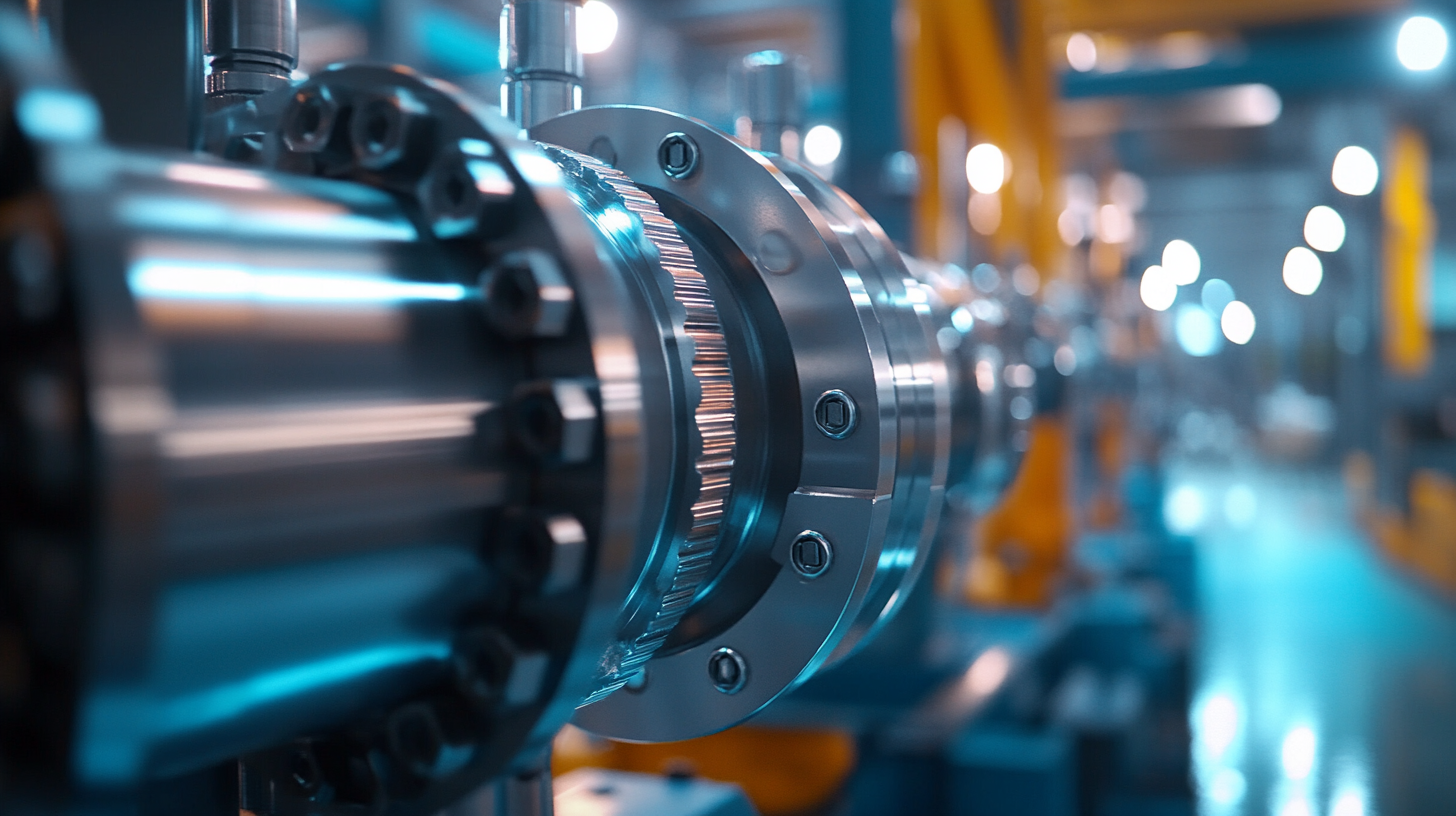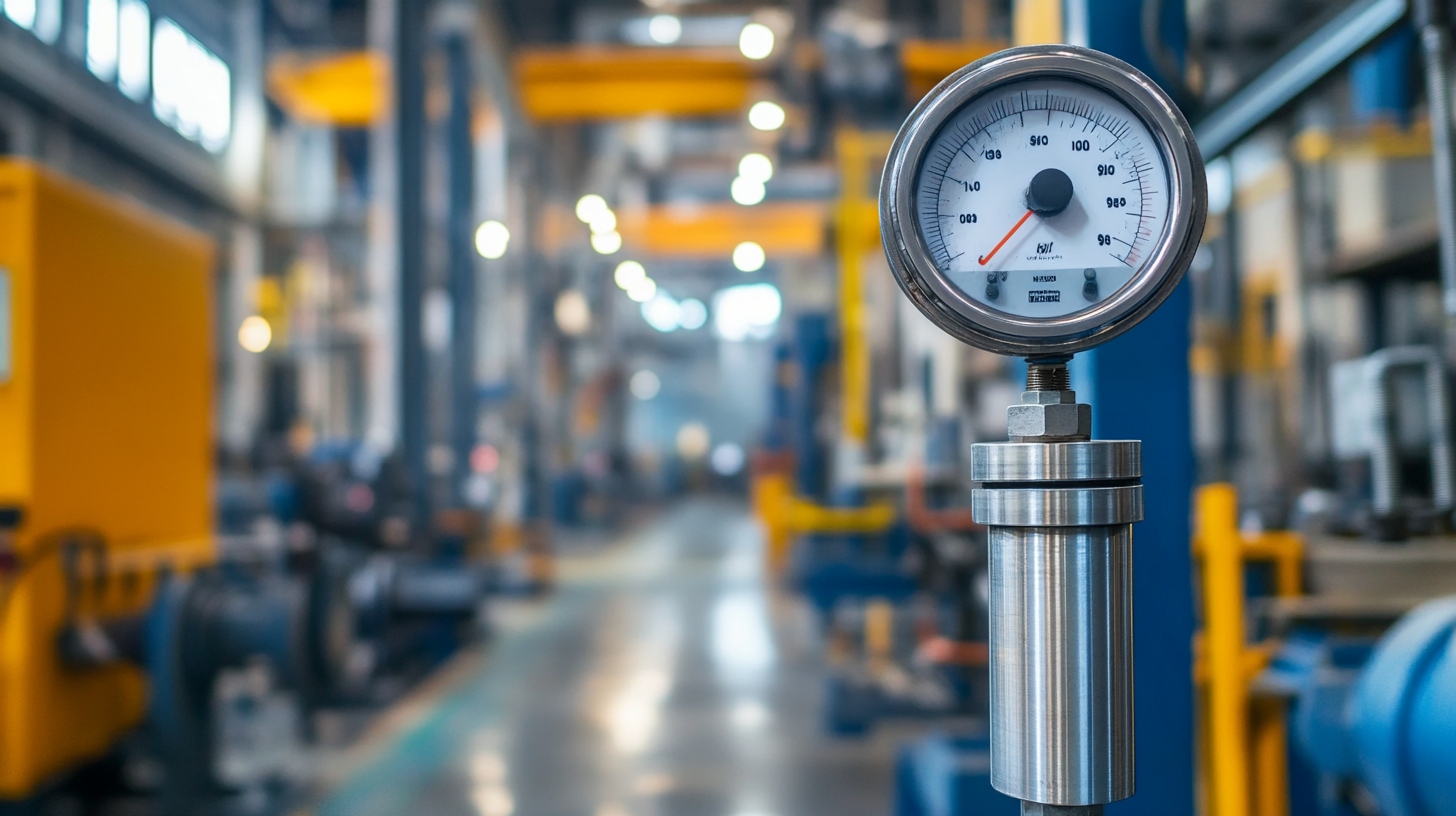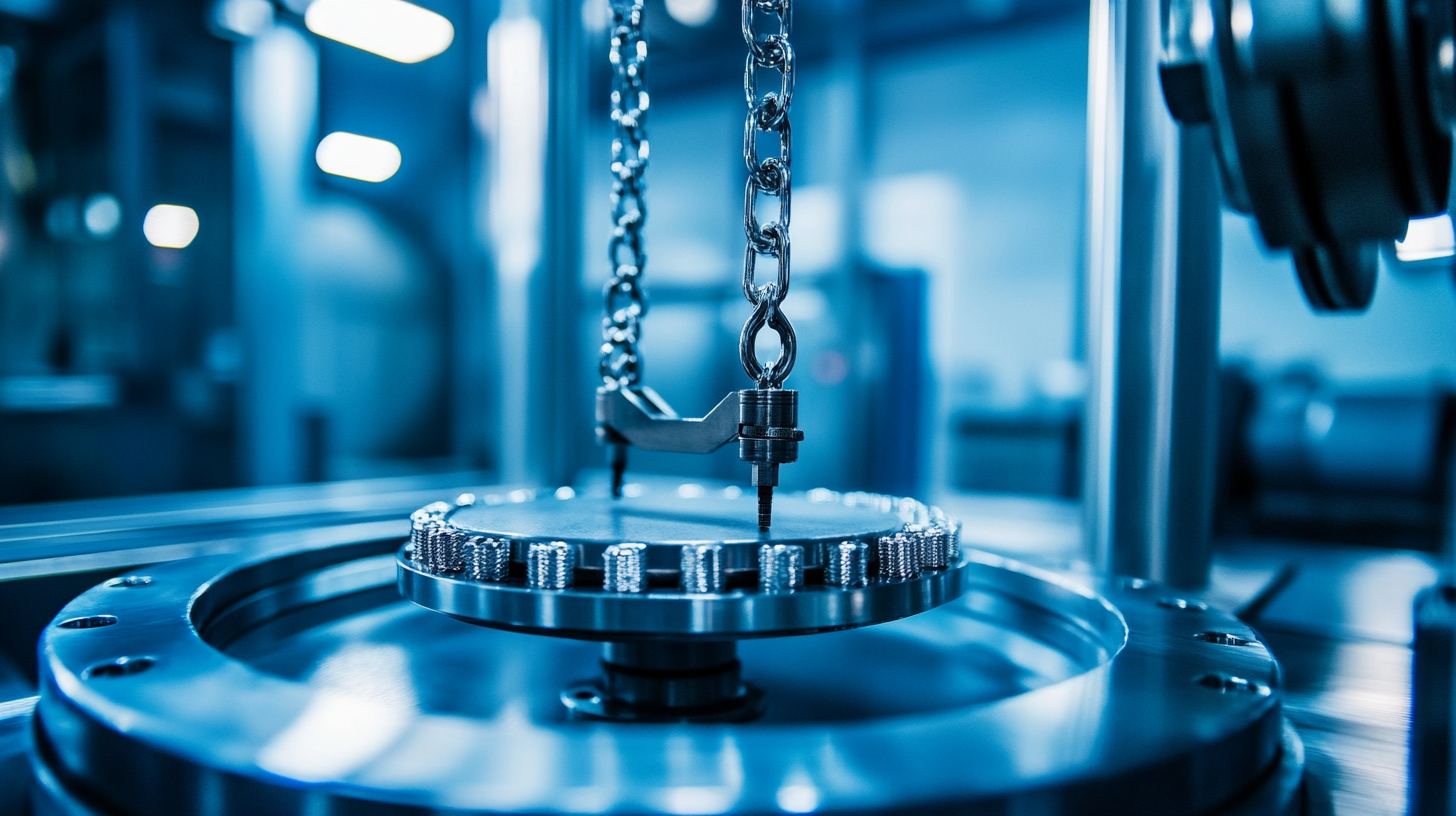 sales@loadcellsensor.com
sales@loadcellsensor.com

Unlocking Efficiency: Key Advantages of Utilizing Compression Load Cells in Industrial Applications
In today’s fast-paced industrial landscape, the demand for precise and reliable measurement solutions is paramount. Compression load cells have emerged as essential instruments, offering unparalleled advantages across various applications. According to a report by MarketsandMarkets, the global load cell market is projected to grow from $3.3 billion in 2020 to $5.1 billion by 2025, driven largely by the increased adoption of automation in manufacturing processes. As industries strive to enhance productivity and reduce operational costs, compression load cells provide accurate force measurements that are critical for quality control, weighing systems, and structural testing.
The benefits of utilizing compression load cells extend beyond mere accuracy; they also play a significant role in improving efficiency and operational safety. A study by Research and Markets indicates that the integration of advanced sensor technologies, including compression load cells, can lead to a 30% improvement in operational efficiency within industrial operations. By minimizing measurement errors and optimizing load distribution, these devices facilitate better decision-making and resource management. As industries continue to innovate and evolve, understanding the key advantages of compression load cells becomes imperative for those looking to stay competitive in the market.

Key Benefits of Compression Load Cells in Industrial Manufacturing Processes
In today's competitive industrial landscape, optimizing manufacturing processes is critical to enhancing productivity and reducing costs. One significant innovation that has emerged is the use of compression load cells. These devices are essential for accurately measuring forces, ensuring that both quality control and operational efficiency are prioritized.
Compression load cells offer several advantages in industrial manufacturing. For instance, they are known for their high accuracy and reliability. According to the International Society of Automation, load cells can achieve an accuracy of up to ±0.03%, making them indispensable in applications where precise force measurement is crucial, such as in weighing and material testing. This level of precision aids manufacturers in minimizing waste and ensuring compliance with stringent industry standards.
Furthermore, the integration of compression load cells simplifies the data acquisition process. According to a report by Research and Markets, the global load cell market is expected to grow at a CAGR of 5.17% from 2021 to 2026, highlighting a shift towards more automated and data-driven manufacturing processes. The real-time data provided by compression load cells enables quicker decision-making, allowing industries to respond promptly to any operational inefficiencies.
Lastly, the durability and versatility of compression load cells make them suitable for various industrial applications, from automotive testing to food processing. Their robust construction ensures they accurately function in harsh environments, reducing maintenance costs and downtime. As industries increasingly prioritize sustainability and efficiency, embracing technologies like compression load cells can significantly contribute to achieving operational excellence.
Unlocking Efficiency: Key Advantages of Utilizing Compression Load Cells in Industrial Applications
| Advantage | Description | Application | Impact |
|---|---|---|---|
| High Accuracy | Compression load cells offer precise weight measurements, crucial for quality control. | Manufacturing, packaging | Reduced material waste and improved product consistency. |
| Durability | Designed to withstand harsh industrial environments with minimal maintenance. | Heavy machinery, industrial scales | Lower long-term replacement costs and downtime. |
| Space Efficiency | Compact design allows for easy integration within existing systems. | Production lines, automated systems | Enhanced workflow and space optimization. |
| Versatility | Applicable across various industries and adaptable to different load requirements. | Construction, food processing | Flexibility in design reduces the need for multiple types of sensors. |
| Cost-Effectiveness | Initial investment offsets operational savings over time. | Logistics, materials handling | Increased profitability through operational efficiency. |
Enhancing Accuracy: How Compression Load Cells Improve Weight Measurement
In today's fast-paced industrial landscape, precision in weight measurement is paramount, and compression load cells emerge as a pivotal technology in achieving this accuracy. A compression load cell operates based on a simple yet effective principle: it measures the force exerted by the weight and converts it into an electrical signal, providing real-time data that is essential for efficient operations. According to the market research report by Grand View Research, the global load cell market is expected to reach $2.35 billion by 2025, reflecting the increasing demand for reliable and accurate weight measurement across sectors.
One of the key advantages of compression load cells lies in their high precision and low hysteresis. With an accuracy rating that can reach up to ±0.1%, these devices significantly reduce the margin for error in weight measurements. This is particularly crucial in industries such as food and beverage, pharmaceuticals, and construction, where even slight discrepancies can lead to substantial financial losses or safety concerns. A study by the National Institute of Standards and Technology (NIST) highlights that utilizing high-precision load cells can enhance product quality and compliance with regulatory standards, thereby minimizing the risk of non-conformance.
Moreover, the design and robustness of compression load cells contribute to their reliability under various operational conditions. They are capable of withstanding harsh environments, extreme temperatures, and substantial overloads, proving essential for long-term applications in manufacturing and logistics. As reported by the International Society of Automation (ISA), facilities leveraging advanced sensor technologies, including compression load cells, can improve process efficiency by up to 20%, underscoring their critical role in optimizing industrial operations. This level of accuracy and durability not only enhances productivity but also fosters a culture of quality assurance across industries.

Cost Savings: Analyzing the Economic Impact of Load Cells in Industrial Settings
The economic impact of utilizing compression load cells in industrial settings cannot be overstated. Load cells, which convert force into an electrical signal, are essential tools for improving efficiency and accuracy in weight measurement. According to a recent report by Research and Markets, the global load cell market is projected to reach USD 1.72 billion by 2025, growing at a CAGR of 4.5%. This growth underscores their increasing relevance and demand across various industries including manufacturing, food processing, and shipping.
One of the key advantages of compression load cells is their role in cost savings. By providing precise weight measurements, businesses can optimize material usage and avoid overloading equipment, which can lead to costly repairs and downtime. A study by the National Institute of Standards and Technology (NIST) highlighted that companies that implemented load cell technology reduced their operational costs by as much as 15% in the first year alone. The ability to track materials accurately means that companies can better manage inventory levels, reduce waste, and ultimately improve their bottom line.
Additionally, load cells contribute to significant efficiency gains in production processes. A report by the International Society of Automation noted that automated weight measurements can reduce labor costs by 20% and improve accuracy by up to 30%. By eliminating manual weighing errors and streamlining the workflow, industries can not only save money but also enhance their overall productivity. The integration of compression load cells is thus a strategic investment for businesses aiming to enhance their operational efficiency and achieve sustainable cost savings.
Technological Advancements: Recent Innovations in Compression Load Cell Design
The rapid evolution of compression load cell technology is driven by significant technological advancements that enhance precision and efficiency in industrial applications. Recent innovations have focused on miniaturization and increased sensitivity, allowing for greater accuracy in measuring loads while occupying a smaller footprint. This transformation is vital in sectors where space is at a premium, enabling industries to integrate these advanced sensors into tighter spaces without sacrificing performance.
Moreover, the development of smart load cells equipped with digital interfaces promotes seamless integration with existing industrial automation systems. These advancements allow for real-time data collection and analysis, facilitating proactive decision-making in operations. Just as the recent strides in lightweight composite structures have redesigned manufacturing paradigms, compression load cells are also pushing the boundaries of what is possible, ultimately optimizing operational efficiency.
The potential for these technological advances extends beyond traditional uses; they are increasingly becoming integrated with emerging fields such as robotics and smart manufacturing. As industries prioritize sustainability, the advancements in compression load cells also align with the trend towards greener technologies, contributing to reduced energy consumption and waste. This convergence not only underscores the versatility of compression load cells but also highlights their crucial role in shaping a more efficient and sustainable industrial landscape.
Unlocking Efficiency: Key Advantages of Utilizing Compression Load Cells in Industrial Applications
This chart illustrates the performance improvements provided by recent innovations in compression load cell design, highlighting the efficiency gains across various industrial applications.
Applications in Various Industries: Exploring the Versatility of Load Cells
In industrial applications, load cells have emerged as essential components due to their ability to provide precise measurements of force and weight. Their versatility across various sectors highlights their significant role in enhancing operational efficiency. For instance, in the automotive industry, load cells are utilized in assembly lines to ensure precise measurements of vehicle components, thus maintaining product quality and reducing waste. According to a recent market analysis by Research and Markets, the global load cell market is projected to reach $3.12 billion by 2025, underscoring the growing dependence on these technologies for efficiency in manufacturing processes.
Moreover, in the food and beverage sector, load cells are integral to packaging and distribution, where accurate weight measurement is crucial for compliance with regulatory standards. As industries face increasing demands for quality assurance, the implementation of load cells can help streamline operations, reduce costs, and ensure higher accuracy in measurements. A report from the International Society of Automation indicates that automated systems incorporating load cells can lead to efficiency improvements of up to 30%, showcasing their critical importance in modern industrial frameworks.
Additionally, the construction industry leverages load cells for monitoring structural integrity and managing material loads. By enabling real-time data acquisition, load cells facilitate informed decision-making, leading to enhanced safety and resource optimization on construction sites. The adaptability of load cells across these diverse sectors proves their vital role in supporting the advancement of industrial technologies, thereby driving productivity and innovation.


